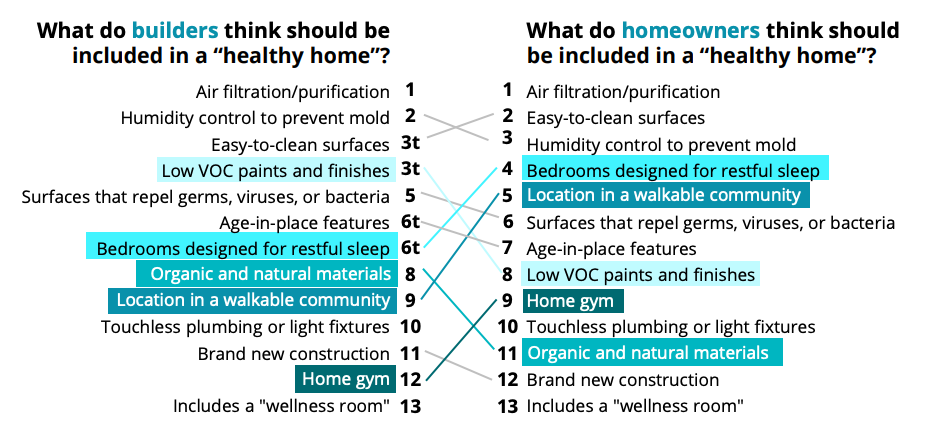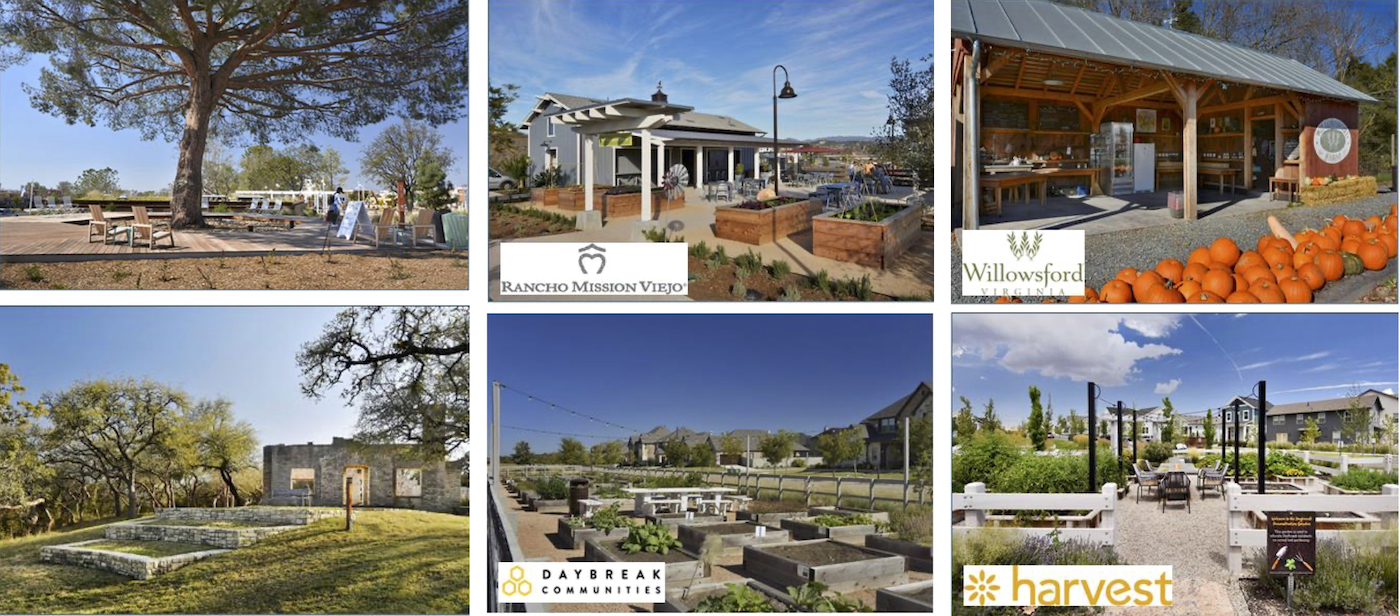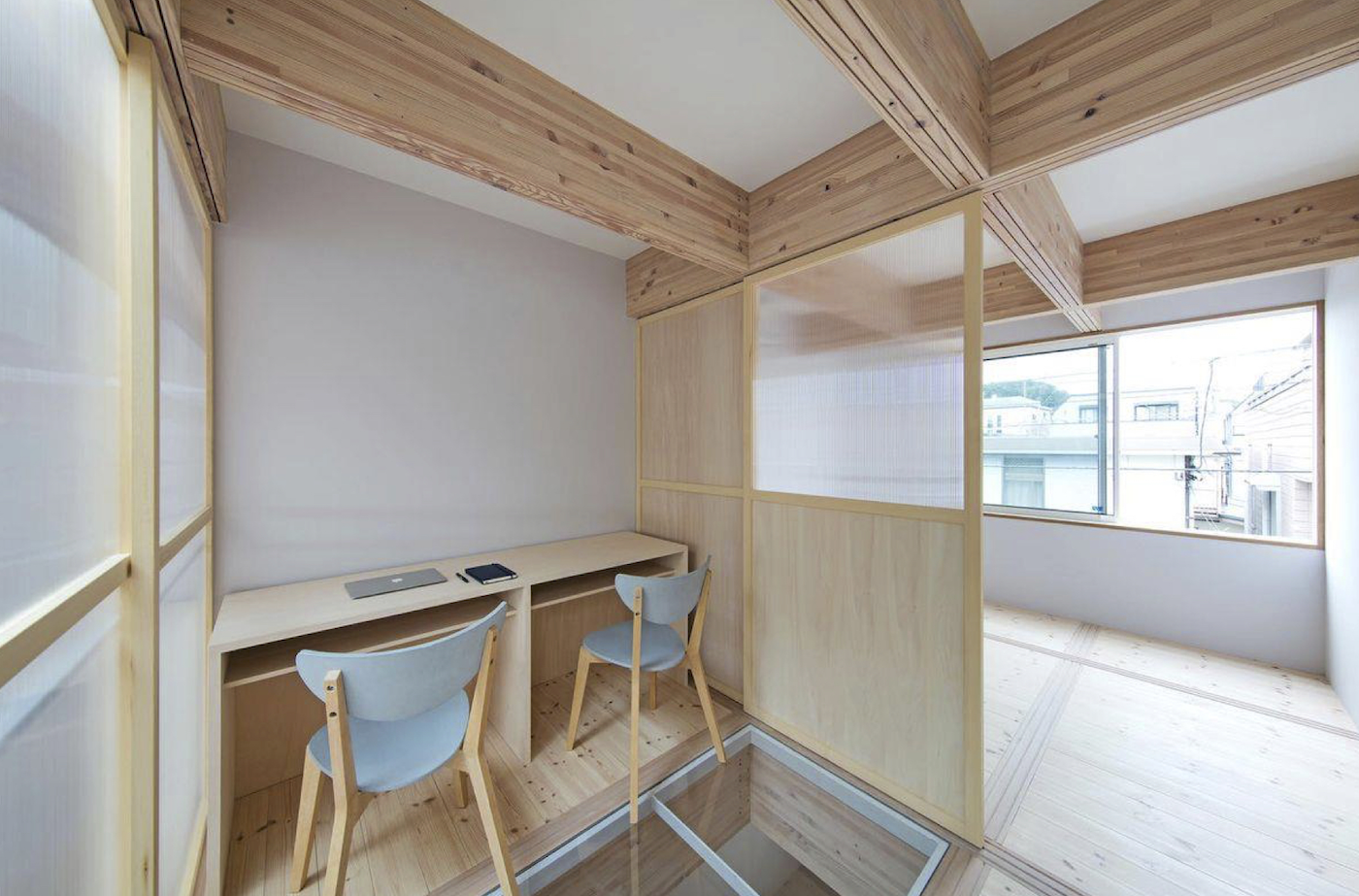This is Part 2 of UTOPIA's recap of the 21 Trends for 2021 webinar, hosted by housing market experts at the New Home Trends Institute. Read 21 Home Design Trends for 2021, Part 1. And watch the entire webinar here.
Trend 10: Our overlapping work and personal lives need more distinct spaces.
For many homeowners, the COVID-19 pandemic has ushered in a new work-from-home reality—which many expect to continue even after the pandemic recedes. Home design will have to adjust. Homes will need discrete spaces that allow people to engage in different activities at the same times, without constantly seeing or hearing one another.
RELATED: 21 Home Design Trends for 2021, Part 1
“We can no longer design a home that assumes household members will be on the same sleep and wake schedule,” says Mikaela Sharp, director of the New Home Trends Institute.
For instance, with a primary bedroom that has a retreat space, one partner can sleep while the other works on the computer.
Watch Now: 21 Trends for 2021 webinar from the New Home Trends Institute (short registration required)
Trend 11: Traditional room sizes will be rethought.
With the rise in working and learning from home, homeowners have had to retool their rooms to serve new and multiple functions. They’ve also had to rethink their assumptions about how big a room should be and what it should look like.
A home office, for instance, doesn’t have to mean a spacious room with a huge desk and paneled walls. It can instead be a functional, well-lit workspace with just-enough room for storage.
“We need to rethink how we’re setting up our homes,” says Jenni Lantz, director of the New Home Trends Institute.
Trend 12: Let in the light.
One thing that video calls have taught us all? The importance of good light.
The vast majority of homeowners prefer large windows, according to ConstructUtopia and John Burns Real Estate Consulting surveys. But they also share a concern: With more windows comes less privacy.
“There are two opportunities for innovation,” says Todd Tomalak, principal, John Burns Real Estate Consulting. One is electrochromic glass whose tint can be automatically adjusted (SageGlass is at the forefront of this technology). The other is simplifying and standardizing the usually tricky installation of small windows, so you can let in more light and still avoid prying eyes.
Trend 13: It’s not just homes—communities also need multifunctional spaces.
Like single-family homes, development communities benefit from spaces that serve multiple functions. At Hillwood Communities’ Pecan Square development in Dallas, the information center serves double-duty: It’s both a co-working space for existing residents and a place for prospective residents to learn about the community. Such spaces “activate the community while demonstrating the lifestyle,” says Ken Perlman, managing principal, John Burns Real Estate Consulting.
Trend 14: Think of health and wellness as a lifestyle, not just a product list.
When it comes to what a healthy home actually means, there’s a disconnect between homeowners and the industry, according to UTOPIA and John Burns Real Estate Consulting surveys (see chart below).
Builders put more emphasis on products like low-VOC paints and easy-to-clean surfaces. By contrast, homeowners focus on attributes such as walkable communities and bedrooms designed for restful sleep.
A pattern emerges from these discrepancies, Sharp finds: “Builders and designers tend to think of the healthy home as a kit of healthy parts. For consumers, a healthy home is much more about lifestyle.”
The upshot: Builders should deliver a healthy lifestyle, not just healthy components.

Trend 15: Promote self-care within the home.
Homeowners’ growing interest in health and wellness extends beyond physical health; it also encompasses mental health. Homes and communities should promote self-care—whether that’s through indoor spaces, like a home spa or cozy reading nook, or outdoor spaces, such as gardens.
“Self-care is becoming more important, especially as we’re not able to get out and about,” Lantz says.
Trend 16: Get your hands on some touchless tech.
Almost half of homeowners (47%) say they’d shell out more for touchless toilets and kitchen faucets, according to the New Home Trends Institute. Yet nowhere near half of homes currently have touchless technology. Builders can tap into that market.
“Homeowners think it’s worth paying extra for touchless,” Tomalak says. “We see a lot of runway for future adoption.”
Trend 17: Find wellness in the great outdoors.
With a growing concern in how our homes help (or hurt) our physical and emotional health, housing communities need to create more planned outdoor spaces. These could range from community gardens to bike and walking trails, perhaps dotted with fitness stations.
“The concept of trails is not a new one, but it’s more important than ever,” Perlman says.
Trend 18: Sustainability as status symbol.
The pandemic may have eclipsed sustainability among many people’s day-to-day priorities, but not for luxury consumers. These homeowners don’t have to worry about the additional cost of sustainable products, but they do worry about how their product choices reflect on them.
This is the sustainable-as-status trend. Luxury consumers will pay more for sustainable products that are good for the environment and help them feel good about themselves.
“You don’t feel guilty you spent more than you should’ve on that new sink because you’re doing your part to help the environment,” Sharp says.
Trend 19: Composite as eco-friendly home improvement.
Homeowners have been turning away from wood and embracing composite. That’s partly because most composite materials come from recycled sources. As evidence of this trend, Tomalak says, look no further than last year’s successful IPO of Chicago building products maker AZEK.
Trend 20: The eco-conscious buyer is real.
Eco-conscious, sustainable, health and wellness: “These aren’t just buzzwords, these are things consumers are really looking for today,” Perlman says.

One eco-innovator, the Florida community of Babcock Ranch, calls itself the country’s first solar-powered town, with an energy center boasting 650,000 solar panels as well as solar charging stations shaped like trees.
Trend 21: Creatively finding privacy.
As we all spend more time at home, we seek creative ways to get some privacy where we can. A Japanese firm has created a home with ceiling beams that double as tracks for sliding doors made of wood or glass. So smaller spaces can be instantly created.
It’s “a good solution for homeowners who lean toward openness and airiness but still want a level of privacy to hide the mess,” Lantz says.






